#tea plantation europe
Explore tagged Tumblr posts
Text
Ssanghwa Tea: A Traditional Elixir for Vitality
Ssanghwa tea is a traditional Korean herbal treatment known for its health effects. This aromatic brew, made from a combination of medicinal herbs including cinnamon, peony root, and ginger, is prized for its revitalizing effects. Ssanghwa tea is a harmonic mix of flavors that provides a peaceful and revitalizing experience that has been treasured for generations in Korean culture.

#orange color tea#ssanghwa tea egg#chinese tea tree#ssanghwa tea#yellow gold tea#tienchi flower tea#black dragon tea#ssanghwa-cha#african tea ceremony#mint tea origin#simon levelt tea#gunfire cocktail#tea plantation europe
1 note
·
View note
Text


Gorreana Tea Factory, Plantações de Chá Gorreana, Maia, Portugal
Humphrey Muleba
0 notes
Text
Top 5 Reasons to Visit Sri Lanka in 2024!

Sri Lanka, a gem in the Indian Ocean, beckons travelers with its diverse landscapes, rich history, and warm hospitality. As 2024 unfolds, there's no better time to explore this enchanting island. Whether you're drawn to vibrant city life, wildlife adventures, serene hill country, tea plantations, or cultural marvels, Sri Lanka offers an array of experiences that will leave you captivated.
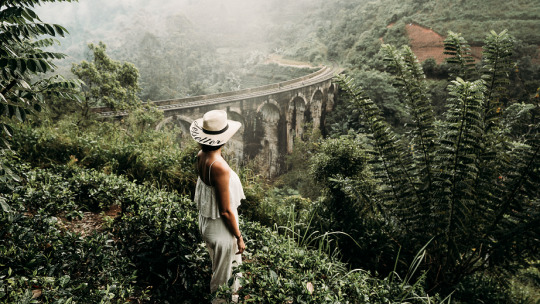
1. City Life: Colombo
Embrace the vibrant city life in Colombo, where ancient traditions meet modern elegance. The Gangaramaya temple, a beacon of serenity, houses life-sized Buddha idols and a mesmerizing white jade Buddha. Cross the street to Beira Lake and discover the Seemamalakaya, an architectural marvel by Geoffrey Bawa. Colombo's blend of history and contemporary charm makes it a must-visit.
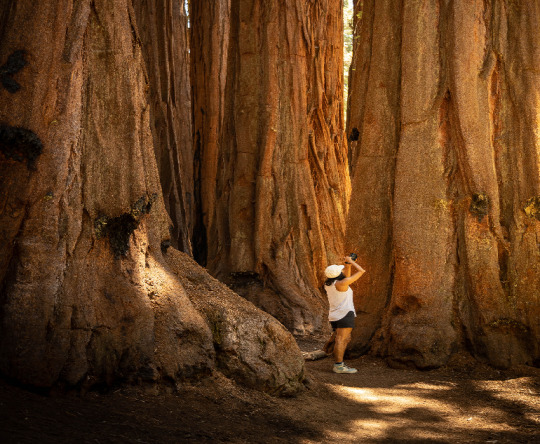
2. Wildlife: National Parks
Discover the incredible biodiversity of Sri Lanka by exploring its 14 national parks. Take a safari game drive in renowned parks like Yala and Minneriya, where elephants, leopards, and a myriad of other wildlife await. For an immersive experience, book a safari through reputable lodges like the Wildlife Tented Lodge, which offers luxury accommodations and guided wildlife encounters..

3. Hill Country: Ella
Ella, nestled amidst waterfalls and iconic landscapes, invites you to hike up Little Adam's Peak for a breathtaking sunrise. Capture the perfect photo at Art Cafe Umbrella and relish your stay at Secret Ella or indulge in luxury at 98 Acres Resort, which offers picturesque views of Little Adam's Peak.
4. Tea Plantations: Nuwara Eliya
Take a scenic train ride from Ella to Nuwara Eliya, where misty scenes and tea plantations create a magical setting. Engage in tea-tasting tours, explore Horton Plains National Park, and unwind at Oliphant Bungalow. Nuwara Eliya's cooler weather and scenic beauty make it a haven for tea enthusiasts.
5. Cultural & Historical Value
Discover the cultural treasures of Kandy, your gateway to UNESCO sites like Sigiriya and the Dambulla Caves. Stay at the eco-friendly Aarunya Nature Resort, savoring the beauty of tea plantations. Explore Sigiriya's "Lion's Rock" for panoramic views and delve into the ancient wonders of Dambulla Caves, a well-preserved temple complex.
Summarizing Reflections As Sri Lanka emerges from its past, it welcomes travelers with open arms. Meet friendly locals, savor delectable cuisine, and marvel at the pristine beauty of this island nation. Don't wait – book your ticket, plan your journey, and get ready to capture the essence of Sri Lanka in 2024. For more travel inspiration and tips, visit TheEagerTraveler.com. Embark on a journey that promises memories of a lifetime.
#adventure travel blogs#backpacking guide for beginners#world travel guide#destination guide santa maria valley#best travel blogs#europe travel blog#female travel bloggers#destination guide carmel#top 5 Reasons to Visit Sri Lanka in 2024#City Life Colombo#Wildlife National Parks#Tea Plantations Nuwara Eliya#Cultural & Historical Value
1 note
·
View note
Text





Azores (2) (3) (4) (5) by Jurgen L
Via Flickr:
(2) Located in São Miguel island in the Azorean archipelago, Gorreana is the oldest, and nowadays the only tea plantation in Europe. (3) Sete Cidades lake covered in clouds. (4) The main village of Monsteiros is located on a fajã at the tip of the island, surrounded by coastal cliffs that reach 20 metres (66 ft). The westernmost settlement on the island of São Miguel. (5) Rough sea at the coast of Mosteiros where people come to swim in the natural pools of crystalline water resulting from volcanic activity.
#cloudy formations#stormy#cloudy#landscape#countryside#tea plantations#mist#lakes#coastal#rocky shore#portugal#the azores
250 notes
·
View notes
Text
About the entanglement of "science" and Empire. About geographic imaginaries. About how Empire appeals to and encourages children to participate in these scripts.
Was checking out this recent thing, from scavengedluxury's beloved series of posts looking at the archive of the Budapest Municipal Photography Company.

The caption reads: "Toys and board games, 1940."
And I think the text on the game-box in the back says something like "the whole world is yours", maybe?
(The use of appeals to science/progress in imperial narratives probably already well-known to many, especially for those familiar with Victorian era, Edwardian era, Gilded Age, early twentieth century, etc., in US and Europe.)
And was struck, because I had also recently gone looking through nemfrog's posts about the often-strange imagery of children's material in late nineteenth- and early twentieth-century US/Europe. And was disturbed/intrigued by this thing:
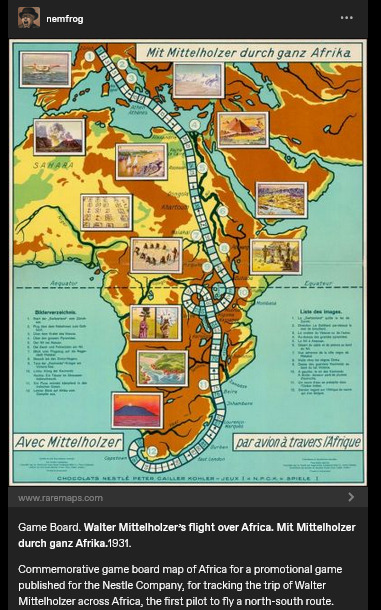
Caption here reads: "Game Board. Walter Mittelholzer's flight over Africa. [...] 1931. Commemorative game board map of Africa for a promotional game published for the N*stle Company, for tracking the trip of Walter Mittelholzer across Africa, the first pilot to fly a north-south route."
Hmm.
"Africa is for your consumption and pleasure! A special game celebrating German achievement, brought to you by the N*stle Company!"
1930s-era German national aspirations in Africa. A company which, in the preceding decade, had shifted focus to expand its cacao production (which would be dependent on tropical plantations). Adventure, excitement, knowledge, science, engineering prowess, etc. For kids!
Another, from a couple decades earlier, this time British.
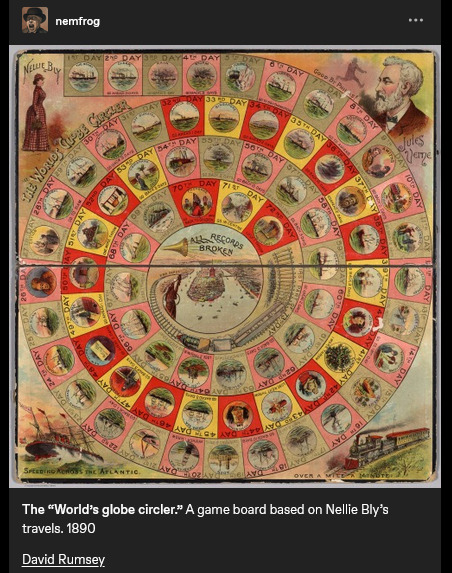
Caption reads: "The "World's globe circler." A game board based on Nellie Bly's travels. 1890." At center, a trumpet, and a proclamation: "ALL RECORDS BROKEN".
Same year that the United States "closed the frontier" and conquered "the Wild West" (the massacre at Wounded Knee happened in December 1890). A couple years later, the US annexed Hawai'i; by decade's end, the US military was in both Cuba and the Philippines. The Scramble for Africa was taking place. At the time, Britain especially already had a culture of "travel writing" or "travel fiction" or whatever we want to call it, wherein domestic residents of the metropole back home could read about travel, tourism, expeditions, adventures, etc. on the peripheries of the Empire. Concurrent with the advent of popular novels, magazines, mass-market print media, etc. Intrepid explorers rescuing Indigenous peoples from their own backwardness. Many tales of exotic allure set in South Asia. Heroic white hunters taking down scary tigers. Elegant Englishwomen sipping tea in the shade of an umbrella, giggling at the elephants, the local customs, the strange sights. Orientalism, tropicality, othering.
I'd lately been looking at a lot of work on race/racism and imperative-of-empire in British scientific and pop-sci literature, especially involving South and Southeast Asia. (From scholars like Varun Sharma, Rohan Deb Roy, Ezra Rashkow, Jonathan Saha, Pratik Chakrabarti.) But I'd also lately been looking at Mashid Mayar's work, which I think closely suits this kinda thing with the board games. Some of her publications:
"From Tools to Toys: American Dissected Maps and Geographic Knowledge at the Turn of the Twentieth Century". In: Knowledge Landscapes North America, edited by Kloeckner et al., 2016.
"What on Earth! Slated Globes, School Geography and Imperial Pedagogy". European Journal of American Studies 16, number 3, Summer 2020.
Citizens and Rulers of the World: The American Child and the Cartographic Pedagogies of Empire, 2022.
Discussing her book, Mayar was interviewed by LA Review of Books in 2022. She says:
[Quote.] Growing up at the turn of the 20th century, for many American children, also meant learning to view the world through the lens of "home geography." [...] [T]hey inevitably responded to the transnational whims of an empire that had stretched its dominion across the globe [recent forays into Panama, Cuba, Hawai'i, the Philippines] [...]. [W]hite, well-to-do, literate American children [...] learned how to identify and imagine “homes” on the map of the world. [...] [T]he cognitive maps children developed, to which we have access through the scant archival records they left behind (i.e., geographical puzzles they designed and printed in juvenile periodicals) [...] mixed nativism and the logic of colonization with playful, appropriative scalar confusion, and an intimate, often unquestioned sense of belonging to the global expanse of an empire [...]. Dissected maps - that is, maps mounted on cardboard or wood and then cut into smaller pieces that children were to put back together - are a generative example of the ways imperial pedagogy [...] found its place outside formal education, in children's lives outside the classroom. [...] [W]ell before having been adopted as playthings in the United States, dissected maps had been designed to entertain and teach the children of King George III about the global spatial affairs of the British Empire. […] [J]uvenile periodicals of the time printed child-made geographical puzzles [...]. [I]t was their assumption that "(un)charted," non-American spaces (both inside and outside the national borders) sought legibility as potential homes, [...] and that, if they did not do so, they were bound to recede into ruin/"savagery," meaning that it would become the colonizers' responsibility/burden to "restore" them [...]. [E]mpires learn from and owe to childhood in their attempts at survival and growth over generations [...]. [These] "multigenerational power constellations" [...] survived, by making accessible pedagogical scripts that children of the white and wealthy could learn from and appropriate as times changed [...]. [End quote.] Source: Words of Mashid Mayar, as transcribed in an interviewed conducted and published by M. Buna. "Children's Maps of the American Empire: A Conversation with Mashid Mayar". LA Review of Books. 11 July 2022.
Some other stuff I was recently looking at, specifically about European (especially German) geographic imaginaries of globe-as-playground:
The Play World: Toys, Texts, and the Transatlantic German Childhood (Patricia Anne Simpson, 2020) /// "19th-Century Board Game Offers a Tour of the German Colonies" (Sarah Zabrodski, 2016) /// Advertising Empire: Race and Visual Culture in Imperial Germany (David Ciarlo, 2011) /// Learning Empire: Globalization and the German Quest for World Status, 1875-1919 (Erik Grimmer-Solem, 2019) /// “Ruling Africa: Science as Sovereignty in the German Colonial Empire and Its Aftermath” (Andrew Zimmerman. In: German Colonialism in a Global Age, 2014) /// "Exotic Education: Writing Empire for German Boys and Girls, 1884-1914". (Jeffrey Bowersox. In: German Colonialism and National Identity, 2017) /// Raising Germans in the Age of Empire: Youth and Colonial Culture, 1871-1914 (Jeff Bowersox, 2013) /// "[Translation:] (Educating Modernism: A Trade-Specific Portrait of the German Toy Industry in the Developing Mass-Market Society)" (Heike Hoffmann, PhD dissertation, Tubingen, 2000) /// Home and Harem: Nature, Gender, Empire, and the Cultures of Travel (Inderpal Grewal, 1996) /// "'Le rix d'Indochine' at the French Table: Representation of Food, Race and the Vietnamese in a Colonial-Era Board Game" (Elizabeth Collins, 2021) /// "The Beast in a Box: Playing with Empire in Early Nineteenth-Century Britain" (Romita Ray, 2006) /// Playing Oppression: The Legacy of Conquest and Empire in Colonialist Board Games (Mary Flanagan and Mikael Jakobsson, 2023)
#mashid mayar book is useful also the Playing Oppression book is open access online if you want#in her article on slated globes mayar also mentions how european maps by 1890s provoked a sort of replete homogenous filling in of globe#where european metropole thought of itself as having sufficiently mapped the planet by now knit into neat web of interimperial trade#and so european apparent knowledge of globe provided apparently enlightened position of educating or subjugating the masses#whereas US at time was more interested in remapping at their discretion#a thing which relates to what we were talking about in posts earlier today where elizabeth deloughrey describes twentieth century US#and its aerial photographic and satellite perspectives especially of Oceania and Pacific as if it now understood the totality of the planet#ecologies#tidalectics#geographic imaginaries#mashid mayar#indigenous pedagogies#black methodologies
137 notes
·
View notes
Photo

Sugar & the Rise of the Plantation System
From a humble beginning as a sweet treat grown in gardens, sugar cane cultivation became an economic powerhouse, and the growing demand for sugar stimulated the colonization of the New World by European powers, brought slavery to the forefront, and fostered brutal revolutions and wars.
The geographic center of sugar cane cultivation shifted gradually across the world over a span of 3,000 years from India to Persia, along the Mediterranean to the islands near the coast of Africa and then the Americas, before shifting back across the globe to Indonesia. A whole new kind of agriculture was invented to produce sugar – the so-called Plantation System. In it, colonists planted large acreages of single crops which could be shipped long distances and sold at a profit in Europe. To maximize the productivity and profitability of these plantations, slaves or indentured servants were imported to maintain and harvest the labor-intensive crops. Sugar cane was the first to be grown in this system, but many others followed including coffee, cotton, cocoa, tobacco, tea, rubber, and most recently oil palm.
Beginnings of Sugar Cultivation
There is no archeological record of when and where humans first began growing sugar cane as a crop, but it most likely occurred about 10,000 years ago in what is now New Guinea. The species domesticated was Saccharum robustum found in dense stands along rivers. The people in New Guinea were among the most inventive agriculturalists the world has known. They domesticated a broad range of local plant species including not only sugar cane but also taro, bananas, yam, and breadfruit.
The cultivation of sugar cane moved steadily eastward across the Pacific, spreading to the adjacent Solomon Islands, the New Hebrides, New Caledonia, and ultimately to Polynesia. Cultivation of sugar cane also moved westward into continental Asia, Indonesia, the Philippines, and then Northern India. During this advancement, S. officinarum ("nobel canes") hybridized with a local wild species called S. spontaneum to produce a hybrid, S. sinense ("thin canes"). These hybrids were less sweet and not as robust as pure S. officinarum but were hardier and could be grown much more successfully in subtropical mainlands.
Sugar cane was for eons just chewed as a sweet treat, and it was not until about 3,000 years ago that people in India first began squeezing the canes and producing sugar (Gopal, 1964). For a long time, the Indian people kept the whole process of sugar-making a closely guarded secret, resulting in rich profits through trade across the subcontinent. This all changed when Darius I (r. 522-486 BCE), ruler of the Persian Achaemenid Empire, invaded India in 510 BCE. The victors took the technology back to Persia and began producing their own sugar. By the 11th century CE, sugar constituted a significant portion of the trade between the East and Europe. Sugar manufacturing continued in Persia for nearly a thousand years, under a revolving set of rulers, until the Mongol invasions of the 13th century destroyed the industry.
Continue reading...
27 notes
·
View notes
Note
Thoughts on Macau? I think he'd be an interesting character to think about
💛 MACAU + BRASIL 💚

I know the question was directed to Macau, but it will eventually end up being Maycentric lol since the vision I always bring is the characters' relationships and their interactions with my oc.
In this case, a member of the Portuguese-speaking community and we have a lot to talk about. However, I'm not an internationalist, I know a little about diplomacy and history as a simple hobby. I am not an authority figure.

🎲 MACAU:
My human name for him is Miguel da Silva Xavier/Chan Yee Cheung. Sometimes he may present himself as Miguel Chan. His nickname is Mimi and no one can stop me from calling him like this.
I remember someone a long, long time ago in the fandom giving him the fanon name "Xavier", so it got stuck in me for years, but it sounds better as a surname, in my opinion. So I preserved the Xavier, but as a surname, as a memory, for the sake of that good old-times fanon name, haha.
I baptized him Miguel, fits him better. Actually, Afonso did it, not me xd I am not the colonizer here. 💋
About the Cantonese name... I am not sure if it is correct, I spent so much time researching Cantonese names, and surnames, about important Macanese people, so I could have an idea of names... So, I am deeply sorry if I commited a mistake, if you are Cantonese/Macanese, feel free to correct me. I really tried my best 😔 uff

Lusofam (from Brazil's perspective)
Firstly, nowadays, Mayara barely sees Afonso as a father figure (perhaps due to a kind of resentment that she developed over time). Although yes, in other historical moments Portugal and Brazil have maintained a kind of relationship similar to that of parent-child, but it was a very troubled relationship. And, it's still a complicated relationship. Although, currently, they are on great terms and cooperate with each other. They've been rebuilding a kind of family relationship, but there are still many fights and disagreements; It is very complex to define lol
I know it will sound sad, but May is a bit isolated from Lusofam. Not for the same reasons as the Hispanic American countries, but due to the distance. And because she is not all aware of them.
Brazil is the only country that speaks Portuguese in the Americas. The other Portuguese speakers are too far away to create strong family ties with, although yes, she is interested in getting closer to the Lusofonia, and little by little the relationship between them is becoming closer.
Many of these countries and regions, however, had contact with her at some point during Maylore.
The closest lusófono Mayara feels to having a family relationship (besides Afonso) is Lívia (Angola). With whom I believe she created a true fraternal bond (Brazil was the first country to recognize the Independence of Angola, for example).

HISTORICAL TIES
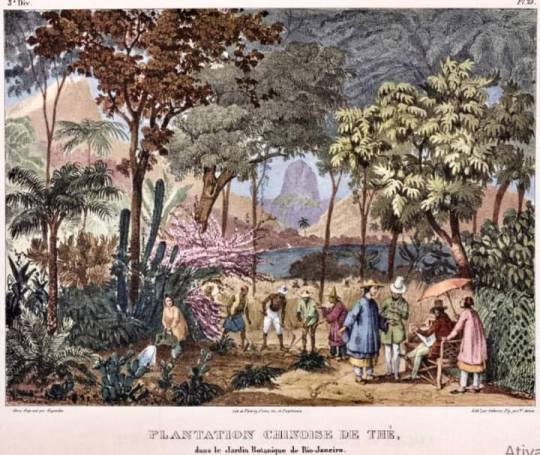
(Chinese Tea plantation in the Jardim Botânico of Rio de Janeiro)
The first relations between Macau and Brazil took place through trade and architecture through Portugal during colonial times.
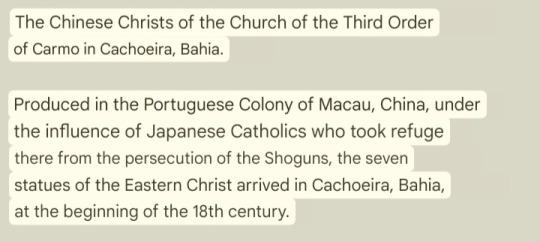
(Via: Terra de Santa Cruz)

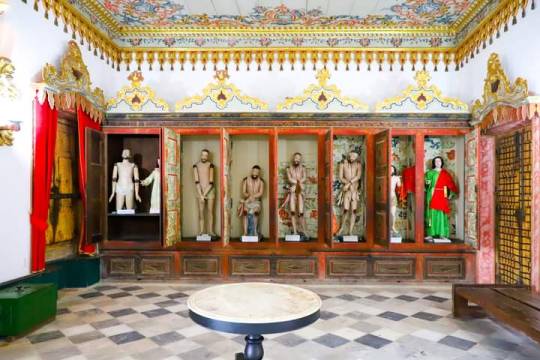
Chinese Jesus Christ.
"They came in one of the ships that traveled the "Indian route", a trade route between Europe and Asia. The presence of these statues in Bahia may have been the result of a mercantile exchange between Brazil and China. Recôncavo's tobacco was appreciated in the East, yielded profits for the Bahian farmer and enriched the region.
One of the fans of Cachoeirense tobacco would have been the Chinese emperor Quianlong (1711-1799), fourth monarch of the Manchu Qing dynasty, who had relations with the Portuguese through Macau. It is likely that, in this circulation of goods and culture between the two regions, a Carmelite friar, a businessman or a high-ranking official from the Portuguese overseas Empire bought or exchanged the set of sculptures for tobacco, giving them as a gift to the Order. Terceira do Carmo." (Font: A Terra de Santa Cruz, FB)
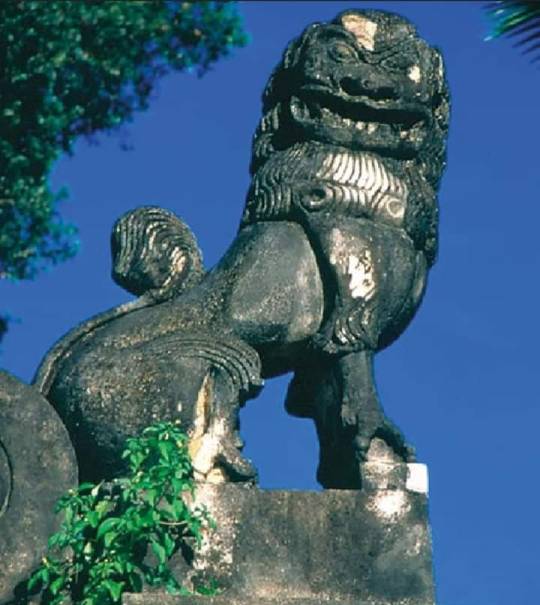
Leão de Fô decorating a church located in João Pessoa, Paraíba.
This is a Chinese-looking statue. Sculpted by Macau and Goa artists in Brazil. This was a type of called "Arte Achinesada", "Chinese-looking art".
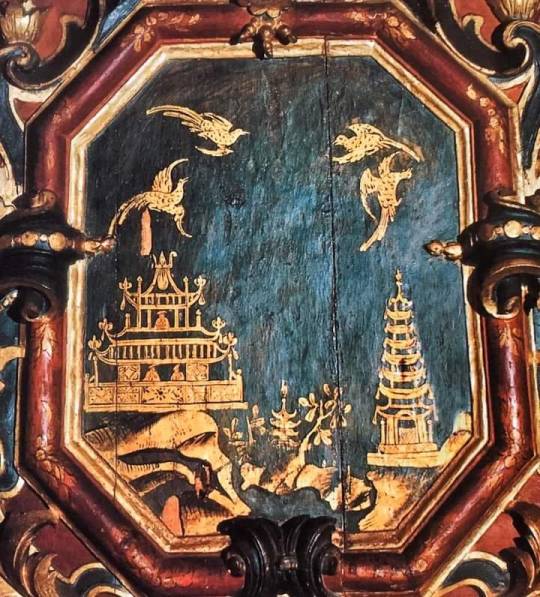
Church of Nossa Senhora do Ó de Sabara, Minas Gerais, with Chinese Pagoda style and Macanese-Goan Chinese-looking art, made by a Goan artist.
This type of art was very popular at the time, and inspired Brazilian artists as well.
The first Chinese Immigrants in Brazil came from Macau:
Now let's talk about what I HC that I believe it was the first personal contact between May and Mimi.
"In 1812, a boat from Macau with tea planters arrived in Rio de Janeiro." First image above in Historical Ties.
"The truth is that there is no consensus on the date. Nor, even, about whether this landing of immigrants was the first contact between China (always through Macau) and Brazil." (A/N: I believe not, due to the infos above).
"Leonor Diaz de Seabra, one of the Portuguese who has most studied the relationship between China and Brazil, points to 1810. The professor at the Department of Portuguese at the University of Macau (and at the Research Center for Luso-Asian Studies) argues that since 1810, tea cultivation began, in the Botanical Garden of Rio de Janeiro, with plants imported from Macau and with 200 Chinese to work there."
(Font: PontoFinalMacau.Wordpress)
Macau wanted Brazil
"If there is no [...] scientific evidence in the Macau archives about the date of sending the ship "Vulcano" with farmers from Hebei to Rio de Janeiro, where they dedicated themselves to planting tea, there is no doubt that Macau has been trying to get closer to Brazil for a long time."
(Font: PontoFinalMacau.Wordpress)
This makes me think that, yes, Brazil and Macau may have met each other somewhere during the ~1810~, a little after the Portuguese Royal Court moved to Brazil. This is a HC, however.
(I DIDN'T GIVE THIS TITLE I JUST STOLE FROM THE SITE WHERE I GOT THE INFO OKAY I AM INNOCENT HERE DON'T LOOK AT ME)
CONCLUSION
AS YOU CAN SEE, there is too much to talk about them. But I had to stop here, because it is becoming too long. I would like to put more details. But you can research by yourself (if you understand Portuguese lol, or if I made another post like this, or to correct myself in the future(?).
Macau and Brazil, in my own views, do not have a fraternal bond (like Brazil and Angola, for example), however, this does not mean that the relations between these two are disposable. Quite the opposite.
Macau is a strategic point for closer ties with China, precisely because they have ties that unite them, which is the history with Portugal and the Portuguese language. (I may have read it in an article many years ago, but I don't remember it).
They do not necessarily need to see each other as siblings, but they can maintain a different relationship; like old acquaintances. Like...someone you have a fondness for based on your historical similarities!
Certainly. I don't see any problem with portraying Lusofam as a family in some type of AU, for example. Like, they all being siblings. I myself have already made drawings portraying May and Mimi as adopted siblings. And it is adorable to see them like this.
It is upon you. 🫵 This is just my vision on them. ☝️ I know I talked more about history and shit, but I think this way I could explain better my vision on them.
All the information I used has its fonts and credits.
Lívia (Angola) (c) @favichanwriter
15 notes
·
View notes
Text
African Treasure: The Story of Rooibos Tea
What do you prefer: tea, coffee? Maybe chicory? Wait, we know – rooibos! Did you guess it? Oh, even if not, TimeTea is sure that you will be interested in reading about where and how this amber-red drink comes from.
So, rooibos (or rooibos) is a herbal tea made from the shoots and leaves of a plant called aspalathus linearis. This specimen belongs to the Legume family and is a shrub up to 1.5 meters in height with small, needle-like leaves.

Aspalathus lineara in its natural form grows exclusively in South Africa – 200 km from Cape Town within the boundaries of the Cederberg mountain range. Today, of course, the plant is cultivated on an industrial scale, but still the plantations do not go beyond the Cederberg Valley. And all for the sake of a pleasant-tasting and energizing drink, which at one time replaced tea for local residents, and then for settlers from Europe.

The first to collect leaves and branches of Aspalatus lineara were the indigenous people – the Hottentot people. Only in the 18th century did the Dutch learn about the plant, and then – closer to the 19th century – the British also caught up. The fact of the “discovery” of rooibos for Europeans is attributed to Carl Peter Thunberg, a Swedish naturalist who was in South Africa on behalf of a Dutch company back in the 1700s. The drink was liked by sophisticated society, and at the beginning of the 20th century they began to export it with might and main. Today, the annual production of rooibos is about 12,000 tons, and half of this is exported.

If you are already tired of coffee and tea or need/want to give up caffeine, rooibos is a great option. It quenches thirst well, tones up, is useful for both adults and children, and can also be drunk without sugar. This herbal tea itself contains a sufficient amount of glucose.

Ready! We’ll dry it and sell it. In addition, rooibos contains enough vitamin C, flavonoids, and a number of minerals. In particular, the flavonoid quercetin has antispasmodic, anti-inflammatory, antioxidant and antitumor properties. Some studies show the effectiveness of rooibos against mutagens, CNS damage and free radicals. Although we, of course, recommend that if something happens, contact doctors, and not tea sellers.

Today you can find this herbal tea in any form: loose, in bags, in pure form and with additives. They even make so-called espresso from rooibos. In general, be sure to try it if you haven’t already!
13 notes
·
View notes
Note
As somebody who watches Bridgerton and really likes hearing your thoughts on it, I was wondering if you know about the lore reasons behind the colorblind casting and what your thoughts on it are because if I'm remembering the Queen Charlotte miniseries properly, then I'm pretty sure it's that the white king of England married Charlotte, a black German woman (who for some reason has a British accent in spite of the fact that she was apparently raised in Northern Germany), and they fell in love afterwards, which resulted in their love basically ending racism.
First of all please keep in mind that I'm white and so I would encourage you to seek out the voices of POC if you want to know more abt this + I'm definitely not the expert when it comes to representation of POC in historical fiction. However that being said I will say that I do know about the lore + the thing about it is that it's still kind of... hollow? Like, even if George III had married a Black woman and it had instantly ended racism in the UK, British regency society as it is reproduced in the show literally could not have existed as it did without 1. slavery and its legacy; & 2. the British empire colonising places in SE Asia + Africa + Ireland + the Americas etc etc. If one removed the British Empire and its atrocities from the world of the show everything would need to be different -- they would have to either straight up not set it in Regency England or create the most convoluted and complex alternate history worldbuilding imaginable to make it so that something even kind of similar could have been created without any racism. Which is possible and would have been really interesting, but they don't do that! They just stick actors of colour into the world as-is, creating the very weird situation of Black people standing in houses which historically were built with wealth brought to England from the colonies, drinking tea with sugar which at that time probably would have been made on plantations, occasionally bringing up a war which was ultimately the result of hundreds of years of tensions including conflict over colonies, and yet... declaring that racism has been ended. Unclear if the writers are unaware of the fact that racism is really still present in the world of their show due to this no matter how much they deny it or if the viewer is meant to assume that the characters just don't care about the suffering of people who one would think they would find solidarity with; neither option is good.
Secondly, and far more importantly imo, the idea that one must create an artificially diverse British upper class in the most bizarre way possible to have representation of POC in historical fiction about Regency England is deeply unserious. There were real notable Black people in Georgian England, not to mention the many communities of working class POC which existed in Europe at the time. So they really didn't need to decide that racism had been ended to tell the same story -- they could have had a fictional Black duke as the love interest anyway, because as previously stated, the idea of Regency Britain as a wholly white society is completely wrong. And the fact that Bridgerton kinda perpetuates this (racist) idea by pretending that their fictional world was necessary for diversity™️ and not just a result of lazy writing and lack of research... well. Not that you can't still enjoy Bridgerton but I'm personally not a fan
11 notes
·
View notes
Text
From Palaces to Plantations: Karnataka's Diverse Architectural Landscape
Karnataka, a state renowned for its heritage and historical importance boasts a captivating mix of architectural styles that have evolved for several centuries. These architectural marvels showcase the influences of dynasties and cultures making Karnataka a fascinating destination, for travelers seeking to delve into its rich history and breathtaking beauty. From palaces to temples, and verdant plantations to tranquil coastal vistas Karnataka offers a mesmerizing tapestry of architectural wonders waiting to be explored.

Palatial Marvels: A Glimpse into Karnataka's Royal Legacy
Mysore Palace:
One cannot embark on a journey through Karnataka's architectural treasures without mentioning the resplendent Mysore Palace. The official residence of the Wodeyar dynasty, this grand edifice is a splendid example of Indo-Saracenic architecture. Illuminated by thousands of bulbs during the Dasara festival, the palace is a sight to behold, blending intricate craftsmanship with a rich historical tapestry.
Bangalore Palace:
Nestled amidst the bustling city of Bangalore, the Bangalore Palace is a testament to the Tudor-style architecture. Constructed by Chamaraja Wodeyar in 1887, the palace is reminiscent of the medieval castles of Europe. With its towering spires and Gothic windows, it provides a fascinating glimpse into the opulent lifestyle of the erstwhile Maharajas.
Spiritual Odyssey: Karnataka's Temple Trail
Hampi – The Ruins of Vijayanagara Empire:
Hampi, a UNESCO World Heritage Site, is a treasure trove of ancient temples and ruins, narrating the tales of the Vijayanagara Empire. The Virupaksha Temple, Achyutaraya Temple, and Vittala Temple are architectural marvels that transport visitors to a bygone era. The intricate carvings and colossal structures stand as a testament to the artistic brilliance of the Vijayanagara architects.
Belur and Halebid Temples:
Drenched in Hoysala architectural finesse, the temples of Belur and Halebid are living testimonies to Karnataka's rich heritage. The Chennakesava Temple in Belur and Hoysaleswara Temple in Halebid showcase exquisite craftsmanship, with detailed carvings adorning every inch of their surfaces. These temples are an ode to the devotion and skill of the Hoysala artisans.
Karnataka Temple Tour Packages:
For those seeking to embark on a spiritual journey through Karnataka's temples, specialized temple tour packages offer curated experiences. These packages often include visits to prominent temples, and historical sites, and insights into the cultural significance of each location. Travelers can immerse themselves in the divine aura while exploring the architectural gems that dot Karnataka's landscape.
Tranquil Retreats: Karnataka's Plantation Havens
Coorg – The Coffee Paradise:
Known as the "Scotland of India," Coorg is famous for its coffee plantations. The region's verdant hills are adorned with sprawling coffee estates, where visitors can witness the coffee-making process, from bean to cup. The plantations offer a tranquil escape, with the aroma of fresh coffee lingering in the air. Homestays within these plantations provide an authentic experience of Coorg's natural beauty and hospitality.
Chikmagalur – Land of Serenity:
Chikmagalur, nestled in the Western Ghats, is a true paradise for those who appreciate nature's wonders. The area is surrounded by lush vegetation and picturesque hills, as well as coffee, tea, and spice plantations. A stroll through these plantations reveals the agricultural diversity that defines Karnataka. Chikmagalur offers a serene retreat for those seeking solace in the lap of nature.
Coastal Karnataka: A Journey Along the Shoreline
Mangalore – Gateway to the Arabian Sea:
The picturesque region of Mangalore, in Karnataka along the coast, presents a fusion of stunning architectural marvels and breathtaking natural beauty. Within the city, you'll discover a multitude of churches like St. Aloysius Chapel each bearing witness to the cultural heritage of the area. The bustling markets add vibrancy. Offer a glimpse into the diverse traditions and customs that thrive here. Let's not forget about the beaches that adorn the Arabian Sea coastline providing an idyllic setting for a serene getaway by the sea.
Udupi – Temple Town by the Sea:
Udupi, known for its ancient temples and delectable cuisine, is a must-visit destination along the coastal trail. The Krishna Temple, with its unique architecture, and the tranquil Malpe Beach are highlights of this coastal town. Udupi's culinary offerings, including the world-famous Udupi cuisine, add a flavorful dimension to the Coastal Karnataka itinerary experience.
Coastal Karnataka Itinerary:
Day 1-2: Mangalore Exploration
Visit St. Aloysius Chapel and Mangaladevi Temple.
Explore the vibrant markets and taste local delicacies.
Relax on the sandy beaches of Mangalore.
Day 3-4: Udupi Delights
Witness the architectural marvel of Udupi's Krishna Temple.
Enjoy the tranquility of Malpe Beach.
Indulge in Udupi cuisine at local eateries.
Day 5-7: Coastal Retreat in Karwar
Head to Karwar for a serene coastal experience.
Explore Sadashivgad Fort and Karwar Beach.
Relax amidst the natural beauty of the region.
Conclusion:
Karnataka's architectural landscape, ranging from palaces and temples to plantations and coastal havens, offers a diverse and enriching travel experience. Whether one seeks spiritual solace, historical insights, or a peaceful retreat amidst nature, Karnataka unfolds its treasures to those willing to explore. With the inclusion of specialized Karnataka Temple Tour Packages and a Coastal Karnataka Itinerary, travelers can embark on a journey that seamlessly weaves together the state's rich heritage and natural beauty. Karnataka truly stands as a testament to India's cultural richness and architectural brilliance, inviting travelers to unravel its myriad stories.
#tourism#travel tips#traveling#travel photography#travel guide#travel blog#travelgram#tourist attraction#places to visit#vacations#love on tour
2 notes
·
View notes
Text
Paper Ghost Prints










I always love the way the prints look after the second or third time running them through the press, I feel like the texture makes them much more interesting to look at.
A Less Personal Side to Tea Drinking...

Susan Stockwell (2000) Tea Country Collage
Susan Stockwell has used paper, paper products and other commonplace materials, such as rubber and wool, in a number of highly inventive ways. They are all centred on the notion of map as signifier of commodification, trade and economic power. In this piece she has stitched together used tea bags in a witty commentary on a peculiarly British obsession, tea drinking. At the same time it is a reference to the British Empire's former control of India and the legacy of Imperial exploitation.
Brief History
The history of tea drinking is far more vast than I initially expected, dating back to 2700BC, but it’s not surprising how much tea’s popularity has spread around the globe, and how much it has become part of people’s daily lives.
Tea fuelled centuries of imperial expansion, exploitation and industrialisation. But, cup by cup, it has also facilitated social unity and compassion and the latter is extremely relevant to me during times of isolation throughout Covid 19, changing the way I worked, studied and lived. Tea drinking remained consistent.
Because of these economic and social effects, the UK remains one of the top tea-consuming countries, downing approximately 100 million cups each day. Depictions in art and advertisements show how tea has become intertwined with British history and identity, uniting consumers in a shared national story while distinguishing social values in the many methods of sharing a cup.

Tea Plant (Camellia Sinensis): Flowering Stem Unknown Artist
As shown in this botanical drawing, the tea plant (Camellia sinensis) produces flowers, but its leaves are used to produce the drink. They are withered, dried, and oxidised in different ways to create the varied kinds of tea we know today. Tea naturally contains caffeine, which stimulates energy, and tannins.
The ingredients found in the tea bags I drink are slightly different to traditional tea, but they got me thinking about the different elements a tea bag is composed of such as textures and smells.
How can these elements be used to create work? Can I dissect tea bags and use the loose tea to draw or print with?
Tea was first cultivated in China, In the eighth century, tea spread to Japan via Buddhist monks. The country developed its own unique tea culture, formalising the aesthetic and philosophical ritual of the tea ceremony in the sixteenth century.
Tea and Colonialism
As global trade expanded, tea arrived in Europe in the early 1600s, and in England by the 1650s. 'The beverage soon became a necessity of life – a taxable matter,' scholar Okakura Kazukō wrote. England's subsequent commerce in tea lit the fuse of American independence, caused devastating social and economic effects in China, and drove the violent colonisation of India.

Indian Tea Plantation, an European Lady and Gentleman on Horseback Approach the Main House, Where a Number of People Await Their Arrival Unknown Artist
The above watercolour illustrates some of these oppressive hierarchies in the choreographed arrival of a European man and woman at a plantation.
The tea plant is indigenous to Assam, a fact that British speculators discovered only after several failed attempts to introduce Chinese plants to the area in the 1830s. Tea consumption in India predated the British arrival, but the introduction of industrial production and colonial control altered the landscape indelibly.
The monopolistic East India Company founded its colonial trade routes in 1600 and aggressively established commercial and then military control in India. Though chartered to join the spice trade there and in southeast Asia, they expanded their remit to transporting enslaved people from Africa and trading with China and the American territories.

A Ton of Tea (edition 1/3) Ai Weiwei (b.1957) Bristol Museum & Art Gallery
Ai Weiwei's 2007 work A Ton of Tea compresses this global history into a minimalist – albeit hefty – block, the weight of which we still carry today.
Tea and Sexism
Tea served at home garnered feminine associations, as men were freer to socialise elsewhere. Satirical prints like The Tea-Table used this setting – where women held power – to condemn gossip. (The stereotype continued in later images that poked fun at village gossips exchanging scandalous titbits over tea.)

Tea rooms catered to women hemmed in by social restrictions, especially as contemporary coffee houses were often dominated by men.
Thinking...
What has been perceived by me as a mere daily ritual, has a far more significant history and connotations to inequality and sexism than I'd ever imagined.
It will be important to consider these issues when I continue my making process, without totally swaying the initial ideas I had about what tea drinking means to me personally.
1 note
·
View note
Text
Explore Affordable Travel Spots for an Unforgettable 2024 Adventure
The Best Budget-Friendly Travel Destinations for 2024: Travel doesn't have to be expensive, especially in 2024, when the economy has many options. Whether you are a solo traveler or a couple in search of adventure or a family searching for an accessible vacation spot. There are various destinations around the World that meets your pocket without compromising on the experience, from quiet beaches to bustling cities and picturesque mountains. These destinations guarantee priceless deliciousness without having to have a high or expensive price. Those destinations are:
1) Bali, IndonesiaBali remains the best choice for jewelry-loving travelers in 2024. Bali is known for its beautiful beaches, lush greenery and a lively culture, Bali offers many experiences at the lowest prices, there are a wide range of accommodation options available for people with disabilities. Cozy hotels for $10 USD per night to boutique hotels under $50 USD. Delicious local dishes such as Nasi Goreng or Mie Goreng can be purchased for just 2 to 3 USD in local shops while staying there. Don't miss the chance to explore Tegallalang's famous rice terraces or enjoy the tranquility of Uluwatu Temple.
2) Lisbon, PortugalLisbon in Europe for a vacation is a dream destination that won't drain your bank account. Parallel roads, old electric road and stunning coastal scenery Lisbon offers a unique blend of culture and affordability. The city's public transport is economical and many attractions such as Mosterio dos Jeronimos and Torre de Belem, cost less than $10 to visit. Combine this with wine and traditional dishes like bacalhao for an unrivaled culinary experience.
3) Tulum, MexicoMexico is famous for its economical travel options and Tulum stands out as a heaven for those seeking adventure and relaxation. An underwater cave that is as clear as crystal. Tulum is a tropical paradise for a fraction of the price of other popular destinations, accommodation options range from budget hostels to eco-friendly boutique hotels and you can taste authentic tacos as well. Get it for around $1 USD for an unforgettable day trip. Explore the ruins of nearby Coba or Snorkel with Tartarunga in Akumal.
4) Hanoi, VietnamHanoi is an understated must visit destination for travelers in 2024, offering the true essence of Vietnamese culture, from the bustling streets of the Old Quarter to the tranquil Hoan Kiem lake. Street food like pho and banh mi can cost as little as $1 to $2 and local means of transportation like bicycles or buses are incredibly cheap.
5) Istanbul, TurkeyThe city of Istanbul is situated on two continents, it is a cultural source. Famous sites like the Blue Mosque and the Hagia Sophia are open to the public for free or for a nominal cost. Additionally, there are plenty of affordable shopping options in the bustling Grand Bazar for a few bucks, you can get street cuisine such as kebabs or simit . Traveling is affordable and simple, thanks to the city's Bonde System.
6) Sri Lanka
Sri Lanka, a stunning island nation in South Asia, is a dream destination for travelers seeking diverse experiences. Famous for its lush tea plantations in Nuwara Eliya, the golden beaches of Bentota, and the vibrant culture of Colombo, Sri Lanka offers something for everyone. History enthusiasts can marvel at the ancient Sigiriya Rock Fortress, a UNESCO World Heritage Site, while nature lovers can spot leopards and elephants in Yala National Park. For a serene escape, the hill country is perfect for exploring waterfalls and misty landscapes.
Sri Lanka’s warm hospitality, flavorful cuisine—highlighted by aromatic curries and fresh seafood—and rich traditions, like the annual Esala Perahera festival, make it a truly unique destination. Whether you’re looking to relax by the turquoise waters of Mirissa or hike through the scenic trails of Ella, Sri Lanka delivers unforgettable adventures.
7) Cape Town, South Africa
Cape Town, one of South Africa’s most iconic cities, offers a perfect blend of natural beauty, rich culture, and diverse experiences. Nestled between the majestic Table Mountain and the Atlantic Ocean, Cape Town is known for its breathtaking landscapes, including the famous Table Mountain, voted one of the New Seven Wonders of Nature. Visitors can hike to the top for panoramic views or take a cable car for a relaxed experience.
Cape Town’s beaches, such as Camps Bay and Clifton, are perfect for sunbathing, surfing, and beach sports, while the nearby Robben Island, a UNESCO World Heritage Site, offers a glimpse into South Africa’s history. The vibrant V&A Waterfront is a hub for shopping, dining, and entertainment, while the nearby Cape Winelands offer world-class wine tasting tours.
Why Budget Travel is more accessible than ever??
Budget travel is more accessible than ever due to the rise of affordable flights, online travel tools, and budget-friendly accommodations. With the growth of platforms like Airbnb and budget airlines, travelers can explore new destinations without breaking the bank. Additionally, social media and travel blogs provide insider tips on affordable experiences and hidden gems. The increased availability of low-cost travel options, combined with flexible work arrangements, makes it easier for anyone to embark on a memorable journey without spending a fortune.
"Get Latest News on www.bloggergaurang.com along with Breaking News and Top Headlines from all around the World !!"
1 note
·
View note
Text
youtube
10 Islands So Stunning, You Won’t Believe They’re Real. Discover the world’s top ten most beautiful islands—where turquoise waters, lush landscapes, and vibrant cultures combine to create dream destinations you’ll never forget. https://www.youtube.com/channel/UC3o4B5eoAcewBjxvaeC5Rxg?sub_confirmation=1 TIME STAMPS: 00:00 Intro 00:45 Number 10 01:37 Number 9 02:23 Number 8 03:11 Number 7 04:01 Number 6 04:51 Number 5 05:39 Number 4 06:28 Number 3 07:12 Number 2 08:01 Number 1 In this video, we journey across the globe to reveal the top ten most beautiful islands that nature and culture have to offer. From Europe’s timeless charm in Sardinia and Santorini to the idyllic shores of Bora Bora and the Maldives, these islands are showcases of diverse landscapes, rich heritage, and unforgettable experiences. Whether you’re drawn to ancient ruins, vibrant coral reefs, or sun-kissed beaches, each island has a story to tell and a memory waiting to be made. We’ll explore the rugged coastlines and crystal waters of places like Palawan and Maui, where adventure-seekers and serenity-lovers alike find their own slice of heaven. Witness unique wildlife in the Galápagos or immerse yourself in the lush greenery and spice-laden aromas of Sri Lanka’s tea plantations. In Fiji and Seychelles, discover a warmth not just from the tropical breeze, but from the welcoming smiles of local communities eager to share their traditions. Each of these islands is a world unto itself, brimming with individuality and beauty. Whether you’re planning your next vacation or simply daydreaming about distant shores, these remarkable islands remind us why travel is such a transformative experience. Settle in as we count down the very best—from iconic coastlines to secret retreats—inviting you to imagine your toes in the sand and the sound of gentle waves echoing in your ears. 📂 For The Latest Stories on luxury travel, getaways goods, the rich, companies, Top 10’s, biographies, Lavish History, news, and more 📂 https://www.youtube.com/@Lavishangle 🎉 For business enquires contact us at full4sog (@) gmail dot com 💬 Don't forget to leave your thoughts in the comments below. We love hearing from you! 😍 and hit that bell to stay updated on all new videos we release. #lavishgetaways #thelavishandaffluentangle #thelavish&affluentangle #tlaa #viralyoutubevideo #video #viralyoutubevideo #youtubeviralvideos #videosviral #videos #videosyoutube #videosbeta #viralvideos #viralvideo #viral #viralreels #youtubevideos #viralyoutubevideos #Top10Islands #BeautifulIslands #IslandParadise #BoraBora #Santorini #Maldives #Fiji #Seychelles #Palawan #GalapagosIslands #MauiHawaii #Sardinia #SriLanka #IslandGetaway #TravelInspiration #TropicalVacation #CoastalEscape #ExoticDestinations #LuxuryTravel #SunKissedBeaches #TurquoiseWaters #AdventureTravel #GlobalWonders #BucketListTravel #ParadiseFound via The Lavish & Affluent Angle https://www.youtube.com/channel/UC3o4B5eoAcewBjxvaeC5Rxg December 21, 2024 at 05:45PM
#lavishgetaways#luxurylifestyle#luxuryhotels#luxurytravel#luxuryliving#traveltheworld#travelgoals#Youtube
0 notes
Text
[A]nti-homeless laws [...] rooted in European anti-vagrancy laws were adapted across parts of the Japanese empire [...] at the turn of the 20th century. [...] [C]riminalising ideas transferred from anti-vagrancy statutes into [contemporary] welfare systems. [...] [W]elfare and border control systems - substantively shaped by imperial aversions to racialised ideas of uncivilised vagrants - mutually served as a transnational legal architecture [...] [leading to] [t]oday's modern divides between homeless persons, migrants, and refugees [...].
---
By the Boer Wars (1880–1902), Euro-American powers and settler-colonial governments professed anxieties about White degeneration and the so-called “Yellow Peril” alongside other existential threats to White supremacy [...]. Japan [...] validated the creation of transnational racial hierarchies as it sought to elevate its own global standing [...]. [O]ne key legal instrument for achieving such racialised orders was the vagrancy concept, rooted in vagrancy laws that originated in Europe and proliferated globally through imperial-colonial conquest [...].
[A]nti-vagrancy regulation [...] shaped public thinking around homelessness [...]. Such laws were applied as a “criminal making device” (Kimber 2013:544) and "catch-all detention rationale" (Agee 2018:1659) targeting persons deemed threats for their supposedly transgressive or "wayward interiority" (Nicolazzo 2014:339) measured against raced, gendered, ableist, and classed norms [...]. Through the mid-20th century, vagrancy laws were aggressively used to control migration [and] encourage labour [...]. As vagrancy laws fell out of favour, [...] a "vagrancy concept" nonetheless thrived in welfare systems that similarly meted out punishment for ostensible vagrant-like qualities [...], [which] helps explain why particular discourses about the mobile poor have persisted to date [...].
---
During high imperialism (1870–1914), European, American, and Japanese empires expanded rapidly, aided by technologies like steam and electricity. The Boer Wars and Japan's ascent to Great Power status each profoundly influenced trans-imperial dynamics, hardening Euro-American concerns regarding a perceived deterioration of the White race. [...] Through the 1870s [...] the [Japanese] government introduced modern police forces and a centralised koseki register to monitor spatial movement. The koseki register, which recorded geographic origins, also served as a tool for marking racialised groups including Ainu, Burakumin, Chinese, [...] and Korean subjects across Japan's empire [...]. The 1880 Penal Code contained Japan's first anti-vagrancy statute, based on French models [...]. Tokyo's Governor Matsuda, known for introducing geographic segregation of the rich and poor, expressed concern around 1882 for kichinyado (daily lodgings), which he identified as “den[s] for people without fixed employment or [koseki] registration” [...].
Attention to “vagrant foreigners” (furō-gaikokujin) emerged in Japanese media and politics in the mid-1890s. It stemmed directly from contemporary British debates over immigration restrictions targeting predominantly Jewish “destitute aliens” [...].
The 1896 Landing Regulation for Qing Nationals barred entry of “people without fixed employment” and “Chinese labourers” [...], justified as essential "for maintaining public peace and morals" in legal documents [...]. Notably, prohibitions against Chinese labourers were repeatedly modified at the British consulate's behest through 1899 to ensure more workers for [the British-affiliated plantation] tea industry. [...]
---
Simultaneously, new welfaristic measures emerged alongside such punitive anti-vagrancy statutes. [...] Such border control regulations were eventually standardised in Japan's first immigration law, the 1918 Foreigners’ Entry Order. [...] This turn towards instituting racialised territorial boundaries should be understood in light of empire's concurrent welfarist turn [...]. Japanese administration established a quasi-carceral workhouse system in 1906 [in colonized territory of East Asia] [...] which sentenced [...] vagrants to years in workhouses. This law still treated vagrancy as illegal, but touted its remedy of compulsory labour as welfaristic. [...] This welfarist tum led to a proliferation of state-run programmes [...] connecting [lower classes] to employment. Therein, the vagrancy concept became operative in sorting between subjects deemed deserving, or undeserving, of aid. Effectively, surveillance practices in welfare systems mobilised the vagrancy concept to, firstly, justify supportive assistance and labour protections centring able-bodied, and especially married, Japanese men deemed “willing to work” and, secondly, withhold protections from racialised persons for their perceived waywardness [...] as contemporaneous Burakumin, Korean, and Ainu movements frequently protested [...]. [D]uring the American occupation (1945–1952), not only were anti-vagrancy statutes reinstituted in Japan's 1948 Minor Offences Act, but [...] the 1946 Livelihood Protection Act (Article 2) excluded “people unwilling to work or lazy” from social insurance coverage [...].
---
Imperial expansion relied on not only claiming new markets and territories, but also using borders as places for negotiating legal powers and personhood [...]. Japan [...] integrated Euro-American ideas and practices attached to extraterritorial governance, like exceptionalism and legal immunity, into its legal systems. [...] (Importantly, because supportive systems [welfare], like punitive ones, were racialised to differentially regulate mobilities according to racial-ethic hierarchies, they were not universally beneficial to all eligible subjects.) [...]
At the turn of the century, imperialism and industrial capitalism had co-produced new transnational mobilities [which induced mass movements of poor and newly displaced people seeking income] [...]. These mobilities - unlike those celebrated in imperial travel writing - conflicted with racist imaginaries of who should possess freedom of movement, thereby triggering racialised concerns over vagrancy [...]. In both Euro-American and Japanese contexts, [...] racialised “lawless” Others (readily associated with vagrancy) were treated as threats to “public order” and “public peace and morals”. [...] Early 20th century discourse about vagrants, undesirable aliens, and “vagrant foreigners” [...] produced [...] "new categories of [illegal] people" [...] that cast particular people outside of systems of state aid and protection. [...] [P]ractices of illegalisation impress upon people, “the constant threat of removal, of being coercively forced out and physically removed [...] … an expulsion from life and living itself”.
---
All text above by: Rayna Rusenko. "The Vagrancy Concept, Border Control, and Legal Architectures of Human In/Security". Antipode [A Radical Journal of Geography] Volume 56, Issue 2, pages 628-650. First published 24 October 2023. [Bold emphasis and some paragraph breaks/contractions added by me. Text within brackets added by me for clarity. Presented here for criticism, teaching, commentary purposes.]
158 notes
·
View notes
Text
Presidential Holidays: Your Trusted Partner for Memorable Journeys
Planning a vacation can be overwhelming, especially when you have numerous options and limited time. That’s where Presidential Holidays, the best tour travel agency in Madurai, steps in. Whether you're looking for an enriching Madurai, Rameshwaram, Kanyakumari Tour Package, exploring international destinations, or indulging in a culinary or heritage tour, we ensure a seamless experience with personalized services.
Discover South India: A Journey Through Spirituality and Scenic Beauty
South India is home to captivating landscapes, historical landmarks, and sacred temples. Our Madurai, Rameshwaram, Kanyakumari Tour Package offers the perfect blend of spirituality, culture, and natural beauty.
Madurai Travels Tour Packages: Known as the "Temple City," Madurai is a treasure trove of cultural and architectural wonders. Start your journey with the iconic Meenakshi Amman Temple and immerse yourself in the city's rich history. Explore the vibrant local markets or take a Madurai street food tour to savor the city's culinary delights.
Rameshwaram Tour Packages: A sacred town steeped in mythology, Rameshwaram is renowned for the Ramanathaswamy Temple and its intricate corridors. For those short on time, our Madurai to Rameshwaram One-Day Tour Package is ideal. You can also enjoy a scenic ride with our Madurai to Rameshwaram cab services.
Kanyakumari Travel Package: As India’s southernmost point, Kanyakumari offers breathtaking views where three oceans meet. The Vivekananda Rock Memorial and the Thiruvalluvar Statue are must-visit landmarks.
For a more extended journey, opt for the Madurai Rameshwaram Kanyakumari Trivandrum Tour Package from Madurai, which includes a visit to Trivandrum’s iconic Padmanabhaswamy Temple.
Broaden Your Horizons with International Tours
Presidential Holidays is also an international travel agency in Madurai, offering exciting packages to global destinations.
Dubai Package Holidays: Discover the glitz and glamor of Dubai with our Dubai tour packages from Madurai, Bangalore, and other major cities. Choose from luxury or cheapest Dubai holiday packages to suit your budget.
Singapore and Thailand Tour Packages: Perfect for families and couples, our Singapore family holiday packages and Thailand tour packages include trips to Bangkok, Pattaya, and Phuket. These packages are crafted to provide a mix of adventure, culture, and relaxation.
Europe Vacation Packages: From the 7 Days Europe Tour Packages from India to affordable low-budget international tour packages, explore iconic landmarks like the Eiffel Tower, the Colosseum, and more.
Explore Kerala: God’s Own Country
Kerala’s lush greenery and serene backwaters make it a favorite among travelers.
Kerala Tour Packages from Madurai: Start your journey to Kerala with convenient departures from Madurai.
Munnar Travel Packages: Nestled in the hills, Munnar is famous for its tea plantations and cool climate. Our Munnar tour packages for couples and families promise a rejuvenating experience.
Backwater Bliss: Enjoy the beauty of Alleppey with our houseboat tours, or explore the rolling hills of Wayanad with family-friendly packages.
We also offer customized Kerala and Tamil Nadu Tour Packages, blending the best of these two southern states.
Affordable Travel Options
At Presidential Holidays, we prioritize affordability and convenience.
Travel Now, Pay Later: Our vacation and pay later options allow you to plan your dream vacation without financial worries.
Travel Packages on EMI: Spread the cost of your holiday with easy installment options.
Cheapest Package Holidays: Whether it’s a short getaway or an extended journey, our budget-friendly packages ensure value for money.
Heritage and Culinary Tours
South India is a land of heritage and flavors, and we offer specialized tours to showcase both.
Heritage Tour and Travel: Explore Tamil Nadu’s rich history with our South India Temple Tour Packages, including the Madurai Temple Tour Package and other cultural experiences.
Madurai Food Tour: Dive into the city’s vibrant food scene with our culinary tour packages, sampling everything from spicy curries to traditional sweets.
Corporate and MICE Travel
Presidential Holidays is also a trusted partner for corporate travel needs.
MICE Services: From planning MICE conferences to organizing corporate retreats, we handle all aspects of business travel with professionalism and efficiency.
Business Travel Solutions: Whether it's group travel or individual business trips, we ensure a seamless experience for our clients.
North India Adventures
Our offerings aren’t limited to South India. Experience the majestic landscapes and historical landmarks of North India with our curated packages.
Kashmir Tour Packages: Known as "Paradise on Earth," Kashmir offers stunning landscapes. Choose from Kashmir holiday packages or romantic Kashmir tour packages for couples.
Golden Triangle Tours: Explore Delhi, Agra, and Jaipur with our Golden Triangle Tour Packages, including visits to the Taj Mahal and other iconic sites.
Shimla Kullu Manali Packages: Perfect for families and couples, these tours promise snow-clad mountains and serene valleys.
Taxi and Car Rental Services
For hassle-free travel, we provide reliable taxi services in Madurai and car rental services for local and outstation trips. Whether it's a comfortable ride to Rameshwaram or sightseeing within Madurai, our services are designed for convenience and comfort.
Why Presidential Holidays?
Unmatched Expertise: As one of the best tours and travels in Madurai, we bring years of experience and in-depth local knowledge.
Tailored Packages: From Madurai travel packages to international adventures, we cater to diverse preferences and budgets.
Seamless Travel: With services like book now, pay later vacations and easy transport options, we make travel stress-free.
Customer Satisfaction: Positive reviews and repeat clients testify to our commitment to excellence.
Start Your Journey Today
Whether you’re planning a serene South Indian tour or an international escape, Presidential Holidays ensures every journey is extraordinary. Explore our diverse packages, including the Madurai Rameshwaram Kanyakumari Tour Package, Kerala holiday packages, and cheapest international trip packages, and create memories that last a lifetime.
Contact Presidential Holidays, the best tour travel agency in Madurai, to book your next adventure today!
0 notes
Text
Japanese tea ceremony
The Japanese tea ceremony is a Japanese cultural activity involving the ceremonial preparation and presentation of matcha, powdered green tea, the procedure of which is called temae. While in Europe it is known as the "tea ceremony", it is seldom ceremonial in its practice.
Most often tea is served to family, friends, and associates; religious and ceremonial connotations are overstated in European places. The English term "Teaism" was coined by Okakura Kakuzō to describe the unique worldview associated with Japanese tea ceremony, as opposed to focusing just on the ceremonial aspect, a perspective that many practitioners frown upon.

Master Sen no Rikyū, who codified the way of tea (painting by Hasegawa Tōhaku)

Tea utensils used by Urasenke iemoto Sen Sōshitsu XV

Guests seated to receive tea (print by Yōshū Chikanobu)

The hostess fills the bowl with green tea powder and then pours hot water into it and stirs with a bamboo whisk.

Guests may be allowed after the serving of the tea (otemae) to take a closer look at the objects in the room (Nishiki-e by Mizuno Toshikata).

A host rests a bamboo ladle on an iron pot that rests inside the sunken ro hearth.

A maiko does a ryūrei style tea where a table and chair are used; visible from left to right are the fresh water container, caddy, bowl, and iron pot.
Zen Buddhism was a primary influence in the development of the culture of Japanese tea. Much less commonly, Japanese tea practice uses leaf tea, primarily sencha, a practice known as senchadō (煎茶道, 'the way of sencha').
Japanese tea ceremony - Wikipedia
Though it originated in China, the tea ceremony has become one of the most quintessentially Japanese experiences.
The tea ceremony sees the simple task of preparing a drink for a guest elevated to an art form, an intricate series of movements performed in strict order—and appreciated by the recipient.
The tea ceremony —or, directly translated, the "way of tea"—is in many ways a microcosm of the Japanese traditional sense of omotenashi, which translates as to look after guests wholeheartedly.
The tea ceremony is known as chanoyu, or sado, in Japanese, and the art and performance of preparing and presenting matcha powdered green tea is called otemae. Chakai are informal gatherings held to appreciate the ritualized serving of tea, while the more formal occasion is a chaji. An alternative, but less common, version of the ceremony uses tea leaves and is known as senchado.


Serving tea is elevated to an art form in Japan
Roots in Zen Buddhism
The tea ceremony is considered one of the three classical arts of Japanese refinement and, alongside kodo incense appreciation and kado flower arranging, can be traced back to Zen Buddhism in the year 815. In that year, the monk Eichu returned from China—where tea had already been consumed for more than a thousand years—and personally prepared sencha for the Emperor Saga.
Impressed, the emperor ordered tea plantations to be cultivated in the Kinki region of western Japan and nobles began to take to the drink, although it was not until the 12th century that tea started to catch on more widely.

This tradition has its roots in Zen Buddhism
Monks' religious rituals
The dawning of the 1336-1573 Muromachi Period saw Japan's aesthetic emerge, including in the tea ceremony, and by the 16th century drinking tea was common among all levels of Japanese society.
Sen no Rikyu is arguably the best-known figure in the history of Japanese tea and held the philosophy that every meeting should be treasured because it can never be fully recaptured. He identified principles that must be incorporated into the tea ceremony: harmony, respect, purity, and tranquility.

Kyoto is thought to grow the best green tea in the country
Schools of tea ceremony
Modern masters adhere to the same rules, although there are dozens of different schools of the tea ceremony, each with subtle differences.
A tea ceremony will traditionally take place in a purpose-built chashitsu tea house, featuring a tatami-mat floor with a hearth built into it. The materials used for the building and the design are deliberately rustic.
A tea master uses a number of specialist implements, including the chawan tea bowl, a scoop for the powdered tea made from bamboo and a tea whisk, known as a chasen, also carved from bamboo.


The tea is prepared using specialist implements
Precise procedures
While the precise actions of a tea ceremony vary slightly between the schools, there are a number of similarities. Guests take off their shoes before being ushered into the waiting room of the tea house. Greeted with a silent bow from the host, they ritually purify themselves at a stone basin by washing their hands and rinsing their mouths before they enter the tatami-mat room, where they are expected to comment on the scroll that is hanging in the alcove or the seasonal flower arrangement.
As soon as the guests are seated in the seiza kneeling position, the tea master begins the ceremony by cleaning the utensils meticulously and in a precise order. The tea is prepared in a kettle over a charcoal fire with similar attention to detail, and the final brew is poured into a bowl that is handed to the first, most important guest.
The recipient is expected to raise the bowl in a mark of respect to the tea master, rotate it slightly to avoid drinking from the front, take a sip and then compliment the master on the taste and the bowl in which it's served. The bowl is then passed to the next guest, who repeats the procedure until each guest has sampled the tea.

The tea master will wear traditional dress to perform the ceremony
Importance of etiquette
Guests may then be served small sweet cakes while the host prepares a second bowl of thinner tea for each guest, with participants expected to comment on the beauty of the setting and the craftsmanship that has gone into the utensils used in the ceremony. Aesthetically pleasing, light meals using seasonal ingredients are often served as part of the tea ceremony.
A number of temples, traditional Japanese gardens, cultural facilities, and hotels have tea houses where visitors can experience a tea ceremony—particularly in Kyoto, the ancient capital that is still the center of Japan's traditional culture. And while a full, formal tea ceremony can last several hours, many venues offer abbreviated versions that may be more suitable for foreign guests.


Small meals are often served alongside the tea
Studying the tea ceremony
For anyone who wishes to learn more about this age-old tradition, tea schools across the country offer courses in tea appreciation and the precise steps that are a feature of the ceremony. Such courses are still popular among young women and are believed to be a mark of respect through grace and proper etiquette, although it is widely accepted that becoming proficient in the art will take many years. Even masters of the ceremony who have devoted much of their life to its intricacies will insist they are still learning.

Mariko Mori: 'Invisible Dimension' (2018) Tea ceremony at Sean Kelly Gallery, New York
740 notes
·
View notes